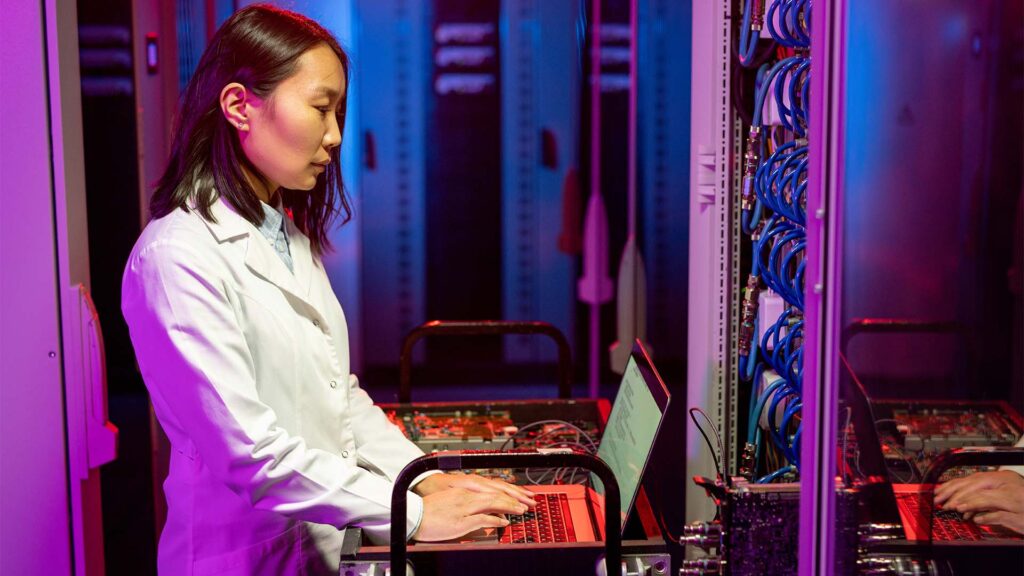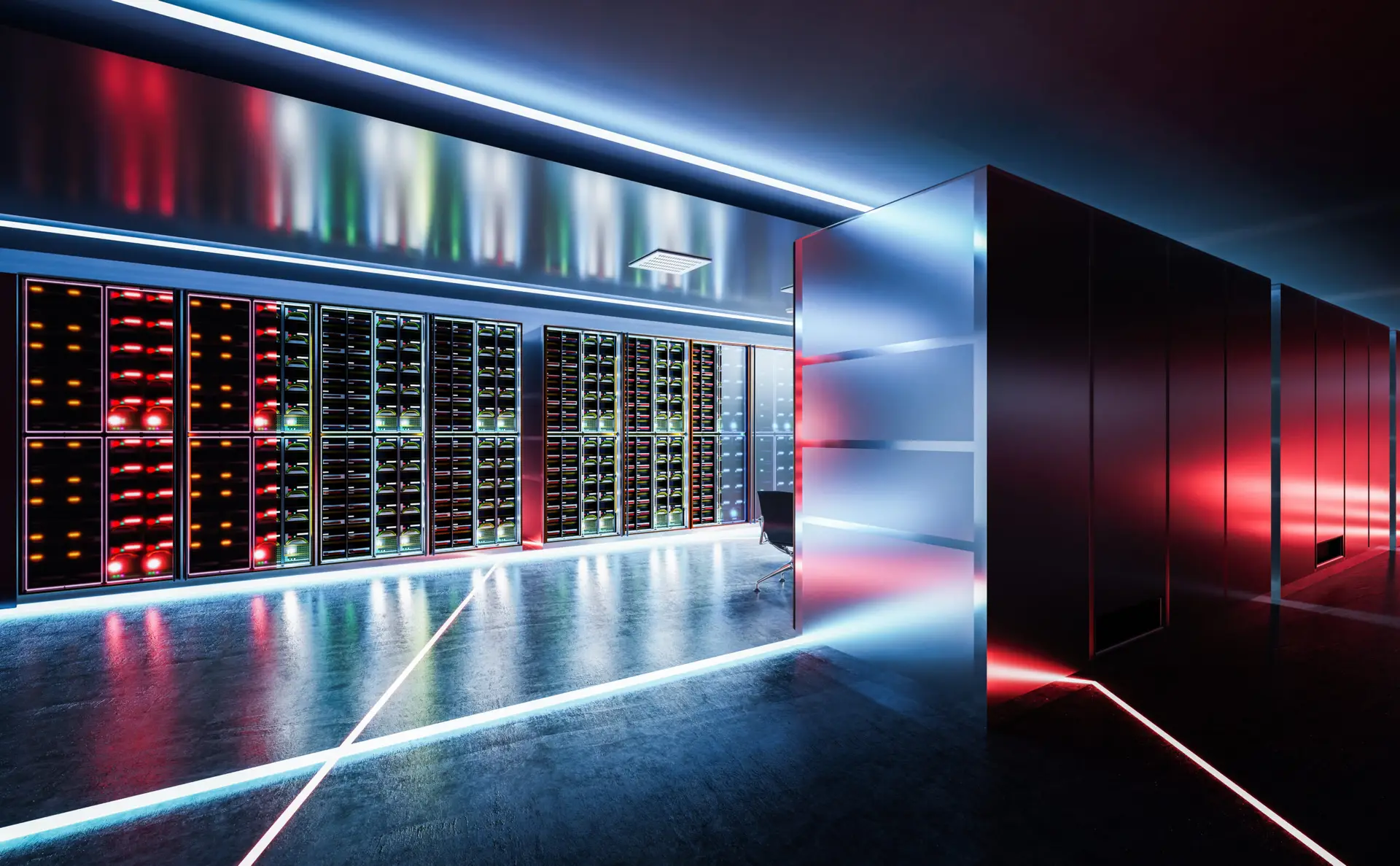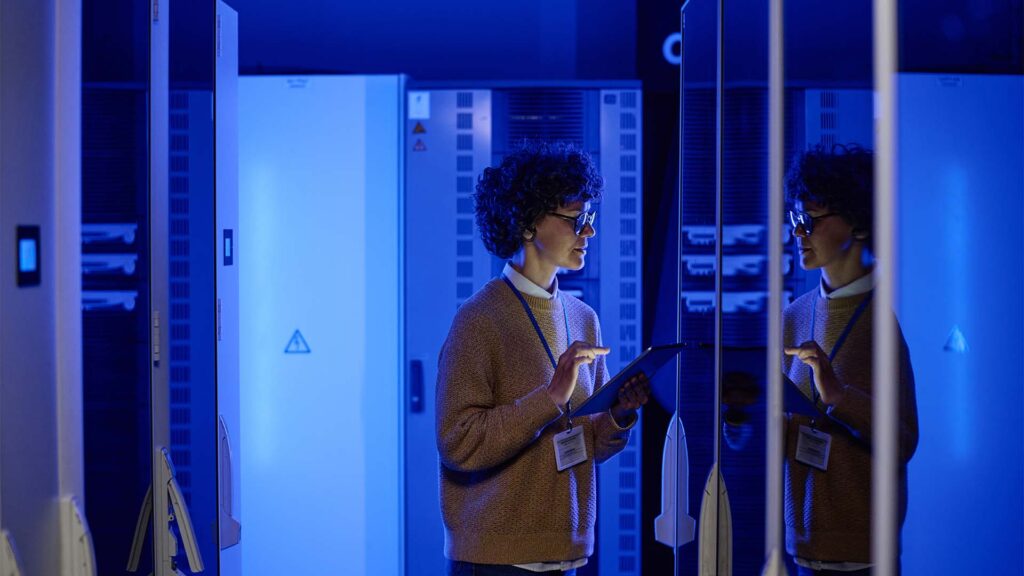Introduction to Data Center Monitoring
Definition and Purpose of Data Center Monitoring
Data center monitoring is the important and continuous process of collecting, analyzing, and interpreting data from critical infrastructure components within a data center. This process includes overseeing IT equipment, power systems, environmental factors, and physical security. Data center monitoring is important because it ensures the health, efficiency, and reliability of the data center, ultimately helping operators detect potential issues early and make informed decisions that minimize downtime.
How Advanced Monitoring Supports Data Center Efficiency and Growth
With the exponential growth of data and the increasing complexity of IT infrastructure, advanced monitoring solutions have become essential for data centers to operate safely and efficiently. Advanced monitoring systems support growth by providing real-time insights that enhance operational efficiency, identify bottlenecks, and allow for proactive maintenance. These systems are key to optimizing resource allocation, improving uptime, and enabling data centers to adapt to the evolving demands of modern enterprises.
The Role of RFID and RTLS Technologies in Modern Data Centers
Technologies such as RFID (Radio Frequency Identification) and RTLS (Real-Time Location Systems) play a crucial role in modern data centers by providing real-time asset visibility. Acceliot’s RFID and RTLS solutions allow data center operators to track servers, storage devices, and other assets in real-time, even when they’re behind closed doors. These solutions help reduce misplacement, enhance inventory accuracy, and streamline operations—ultimately ensuring data centers are running at peak efficiency.
What is Data Center Monitoring?

Overview of Real-Time Monitoring Systems
Real-time monitoring systems are designed to continuously track the health and performance of data center components. These systems leverage technologies such as IoT sensors, RFID tags, and environmental monitoring devices to gather data on everything from temperature and humidity to asset locations. Real-time monitoring helps data center managers stay ahead of potential issues, ensuring a proactive approach to maintenance and operational efficiency.
Monitoring the real-time health of a data center often requires multiple IT systems working in harmony.
For example, IT asset management (ITAM) systems track, manage, and optimize their computing assets throughout their lifecycle. This includes hardware (computers, servers, networking equipment, mobile devices), software (applications, licenses, cloud services), as well as related services, contracts, and inventory data.
Service management systems are often deployed in data centers to schedule and track the processes required to update, repair or retrofit server and computing assets. These solutions add new layers of automation and traceability for all kinds of change management operations.
With so many critical hardware assets, data centers have become leading proponents of asset visibility initiatives.
The Shift Toward Asset Visibility with RFID and RTLS
The use of RFID and RTLS technologies has shifted the focus of data center monitoring towards comprehensive asset visibility. Instead of relying solely on manual checks, these technologies offer automated tracking of IT assets, allowing for better control, improved utilization, and reduced chances of equipment being misplaced. Acceliot’s RFID solutions, for instance, provide accurate, non-line-of-sight tracking for critical assets, making it easier to maintain an up-to-date inventory.
Key Metrics Tracked in Data Centers
Some of the key metrics tracked in data centers include:
- Power Usage Effectiveness (PUE): Measures how efficiently energy is being used.
- Server Utilization Rates: Tracks how effectively server resources are being used.
- Environmental Indicators: Monitors temperature, humidity, and airflow to ensure optimal operating conditions.
- Physical Security: Tracks access points and monitors surveillance systems to maintain data center security.
As data centers grow, the monitoring systems must be capable of scaling to accommodate new equipment and expanding infrastructure. Ensuring scalability is crucial for keeping up with growth without compromising efficiency.
Challenges in Data Center Monitoring
Scalability for Growing Data Centers
As data centers grow, the monitoring systems must be capable of scaling to accommodate new equipment and expanding infrastructure. Ensuring scalability is crucial for keeping up with growth without compromising efficiency.
Integrating RFID, RTLS, and Legacy Systems
Integrating modern RFID and RTLS technologies with existing legacy systems can be challenging. Effective integration requires careful planning to ensure that all components work seamlessly together, enabling a unified approach to data center monitoring.
Managing Alert Fatigue and False Positives
Too many alerts can lead to alert fatigue, causing personnel to miss critical warnings. Monitoring systems must be configured to minimize false positives while ensuring that significant issues are appropriately flagged.
Data Center Monitoring vs. Management vs. Operations
Key Differences and Overlaps
- Monitoring: Focuses on collecting real-time data to detect potential issues.
- Management: Involves planning and optimizing resources for long-term efficiency.
- Operations: Relates to the day-to-day activities required to keep the data center running smoothly.
How RFID and RTLS Fit into Broader Management and Operations
RFID and RTLS technologies support both management and operations by providing visibility into asset locations, improving the accuracy of inventory records, and supporting effective resource planning.
Modernizing Data Center Monitoring
Emerging Trends in RFID and RTLS for Asset Management
Advances in RFID and RTLS are making asset management more efficient, with newer, more accurate tags and better integration capabilities that allow data centers to track assets more effectively.
AI and Predictive Analytics for Proactive Monitoring
The use of AI and predictive analytics is transforming data center monitoring by providing insights that allow operators to predict issues before they arise and make proactive adjustments to prevent downtime.
Future-Ready Tools and Software to Support Scalability
The use of AI and predictive analytics is transforming data center monitoring by providing insights that allow operators to predict issues before they arise and make proactive adjustments to prevent downtime.
Conclusion: The Bottom Line on Data Center Monitoring
Summary of Key Points
Data center monitoring is an essential component of maintaining the health, efficiency, and reliability of modern data centers. By tracking IT infrastructure, environmental conditions, power systems, and physical security, data center monitoring helps operators make informed decisions and avoid costly downtime.
The Importance of Advanced Monitoring Solutions
Advanced monitoring solutions, such as those offered by Acceliot, provide comprehensive visibility into data center operations, enabling real-time insights, proactive maintenance, and improved operational efficiency.
How Acceliot Supports Data Centers with RFID and RTLS Technology
Acceliot’s RFID and RTLS technologies are designed to provide data centers with the tools they need to enhance asset management, improve visibility, and ensure optimal performance. By implementing these advanced monitoring solutions, data centers can remain competitive and efficient in an increasingly demanding environment.
Importance of Data Center Monitoring
Enhancing Uptime and Reliability with Advanced Solutions
One of the primary goals of data center monitoring is to enhance uptime. Real-time alerts, predictive analytics, and proactive maintenance play crucial roles in identifying potential issues before they lead to failures, ensuring that systems are always operational, and downtime is minimized.
Improving Asset Management and Visibility
RFID and RTLS technologies significantly improve asset management within data centers by providing real-time visibility. This enhanced visibility allows operators to track servers, cables, storage units, and other equipment, ensuring they are always accounted for and effectively managed.
Ensuring Security and Compliance in Data Center Operations
Maintaining a secure environment is vital for data centers. Monitoring systems that include access control and surveillance integration help ensure that security protocols are followed, and compliance standards are met. This is especially important for safeguarding sensitive information and avoiding costly breaches.
Reducing Costs through Proactive Maintenance and Real-Time Insights
By proactively addressing potential issues before they escalate, data center monitoring reduces the likelihood of costly repairs and service interruptions. Furthermore, real-time insights into energy usage and resource allocation help optimize operational costs, making data centers more cost-effective.
Components Monitored in a Data Center

IT Infrastructure: Servers, Storage Devices, and Network Equipment
IT infrastructure is the backbone of any data center, and monitoring servers, storage devices, and network equipment is crucial to maintaining high performance. Acceliot’s RFID and RTLS technologies provide real-time tracking of these critical assets, reducing the risk of misplacement and improving overall operational efficiency.
Environmental Conditions: Temperature, Humidity, Airflow, and Other Critical Factors
Environmental monitoring is vital to prevent equipment failure due to overheating or other environmental factors. IoT sensors are used to monitor temperature, humidity, airflow, and more, ensuring that environmental conditions remain within optimal ranges and equipment operates safely.
Leveraging IoT Sensors for Environmental Monitoring
Acceliot integrates IoT sensors into its monitoring solutions to gather real-time data on environmental conditions, allowing for quick responses to any deviations that may pose a risk to the data center’s infrastructure.
Power Systems: UPS (Uninterruptible Power Supply), PDU (Power Distribution Unit), and Power Quality
Monitoring power systems is essential for ensuring uninterrupted power supply. Components such as UPS systems, PDU, and overall power quality must be continuously tracked to prevent downtime due to power failures. Data center monitoring helps ensure that backup systems are always ready when needed.
Physical Security: Access Control Systems and Surveillance Integration
Ensuring physical security is a critical component of data center monitoring. Access control systems and surveillance cameras work together to monitor entry points, detect unauthorized access, and maintain a secure environment.
Tools and Systems Used in Data Center Monitoring
RFID and RTLS Technologies
RFID tags and RTLS technologies play an integral role in enhancing asset visibility within data centers. By tagging IT assets and deploying RTLS, data center operators can track the exact location of equipment in real-time, reducing the chances of loss and improving inventory accuracy.
Data Center Infrastructure Management (DCIM)
DCIM software integrates with real-time data tracking tools like RFID and IoT sensors, providing a comprehensive view of data center operations. This integration allows for better decision-making, efficient capacity management, and improved operational performance.
IoT Sensors and Environmental Monitoring
IoT sensors are used to continuously monitor environmental parameters such as temperature, humidity, and airflow. These advanced monitoring systems help ensure that data center conditions remain optimal, reducing the risk of overheating and other environmental issues.
On-Site vs. Remote Monitoring
Benefits and Use Cases for Each Approach
- On-Site Monitoring: Provides immediate access to on-site personnel for addressing issues quickly.
- Remote Monitoring: Allows for round-the-clock monitoring, with alerts sent to remote teams for prompt action, making it ideal for facilities with limited on-site staff or during off-hours.
Benefits of Data Center Monitoring

Improved Uptime through Real-Time Alerts
By using real-time alerts, data center operators can quickly respond to emerging issues before they cause downtime, significantly improving uptime and reliability.
Optimized Capacity Utilization: Utilizing RFID to Manage Resources Efficiently
RFID technology helps optimize capacity utilization by tracking IT assets and ensuring that resources are used efficiently. This minimizes waste and maximizes the use of available capacity, leading to more effective data center operations.
Increased Productivity through Automation
Automating data collection and asset tracking reduces the manual workload for data center staff, allowing them to focus on more strategic tasks, thereby increasing overall productivity.
Risk Reduction and Enhanced Security
Monitoring systems help reduce risk by providing real-time data, ensuring that environmental conditions are optimal, and maintaining physical security through access control and surveillance.
